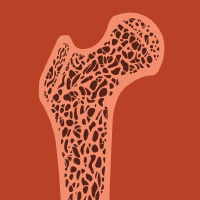Topic Menu
► Topic MenuTopic Editors

Orthopaedic Diseases and Innovative Intervention Strategies, 2nd Volume
Topic Information
Dear Colleagues,
Innovations in technology and bioengineering are crucial in modern surgery. In particular, the continuous evolution of surgical techniques and assisted navigation systems has profoundly changed approaches to orthopaedic surgery. In addition, minimally invasive surgery, computer-assisted systems, virtual reality, and augmented and mixed reality now represent valuable and effective options for surgeons. The development of bioengineering has led to new coating materials for prostheses, ensuring more long enduring implants. All of these technological innovations are improving operating times as well as patient outcomes. In addition, the development of minimally invasive surgical techniques has resulted in continuous improvements in patient outcomes, including decreasing operating times, hospitalisations, rehabilitation, and post-surgical pain. These advantages have led to an increase in the number of operations, thus reducing hospital waiting lists. The development of new techniques and instruments for minimally invasive surgery is necessary to improve the quality of orthopaedic surgery, significantly in influencing healthcare costs. Therefore, scientific and technological progress in orthopaedics is essential for ensuring the best possible patient care. This topic aims to provide the latest scientific evidence regarding the most innovative intervention strategies currently available in all fields of orthopaedic surgery.
Prof. Dr. Umile Giuseppe Longo
Prof. Vincenzo Denaro
Topic Editors
Keywords
- innovation
- augmented reality
- mixed reality
- virtual reality
- minimally invasive surgery
- bioengineering
- technologies
Participating Journals
| Journal Name | Impact Factor | CiteScore | Launched Year | First Decision (median) | APC |
|---|---|---|---|---|---|

Journal of Clinical Medicine
|
2.9 | 5.2 | 2012 | 17.7 Days | CHF 2600 |

Journal of Personalized Medicine
|
- | 6.0 | 2011 | 21.5 Days | CHF 2600 |

Medicina
|
2.4 | 4.1 | 1920 | 17.5 Days | CHF 2200 |

Osteology
|
- | - | 2021 | 22.3 Days | CHF 1000 |

Surgeries
|
1.1 | 1.3 | 2020 | 18.9 Days | CHF 1400 |

Preprints.org is a multidisciplinary platform offering a preprint service designed to facilitate the early sharing of your research. It supports and empowers your research journey from the very beginning.
MDPI Topics is collaborating with Preprints.org and has established a direct connection between MDPI journals and the platform. Authors are encouraged to take advantage of this opportunity by posting their preprints at Preprints.org prior to publication:
- Share your research immediately: disseminate your ideas prior to publication and establish priority for your work.
- Safeguard your intellectual contribution: Protect your ideas with a time-stamped preprint that serves as proof of your research timeline.
- Boost visibility and impact: Increase the reach and influence of your research by making it accessible to a global audience.
- Gain early feedback: Receive valuable input and insights from peers before submitting to a journal.
- Ensure broad indexing: Web of Science (Preprint Citation Index), Google Scholar, Crossref, SHARE, PrePubMed, Scilit and Europe PMC.


